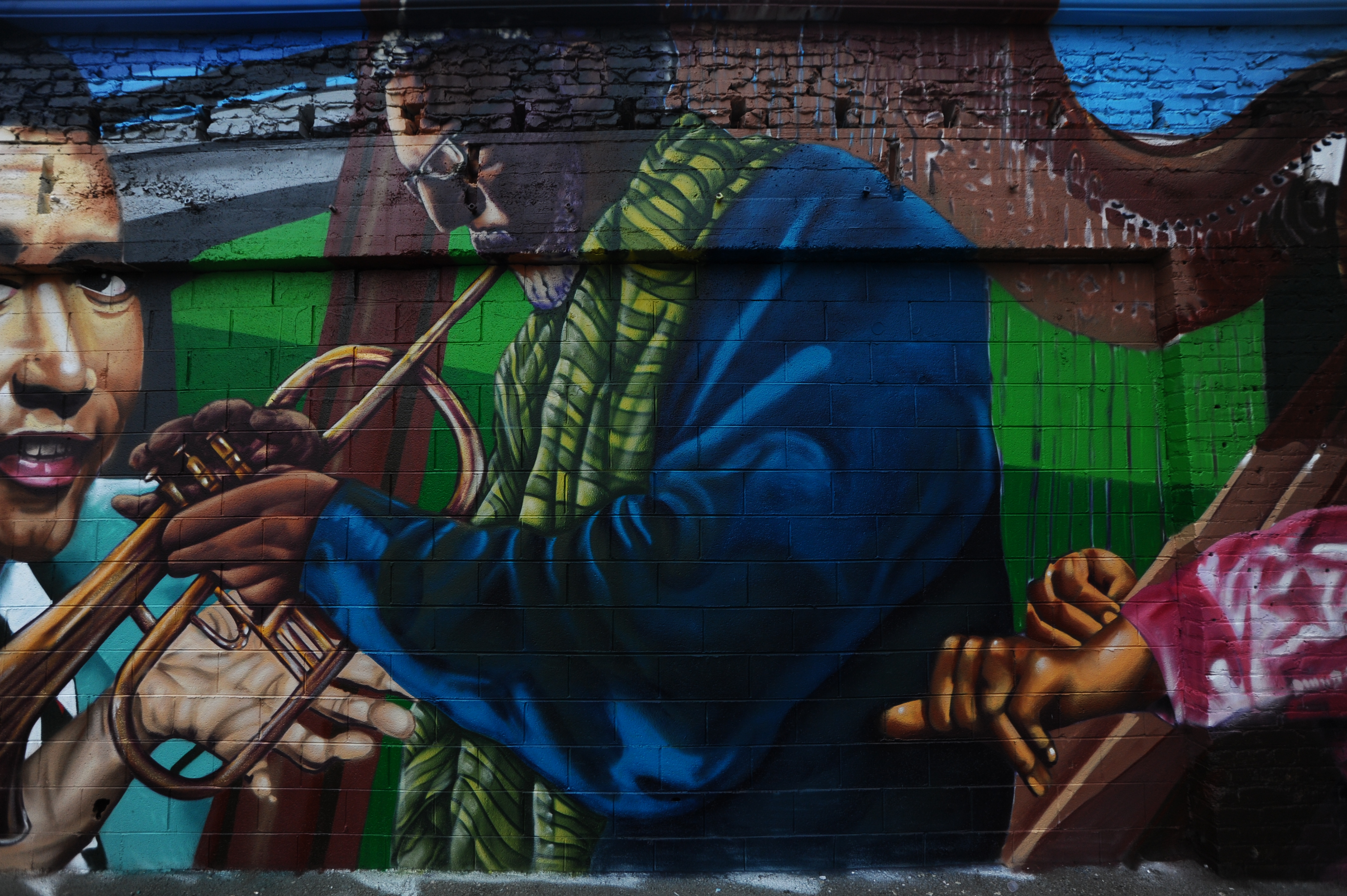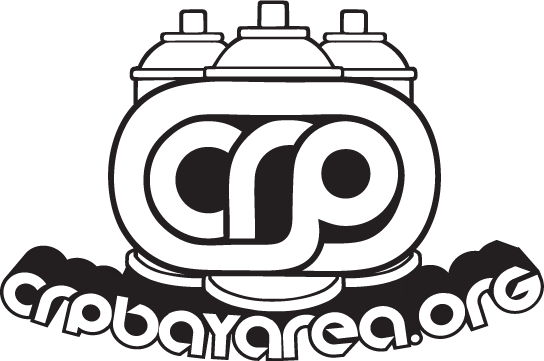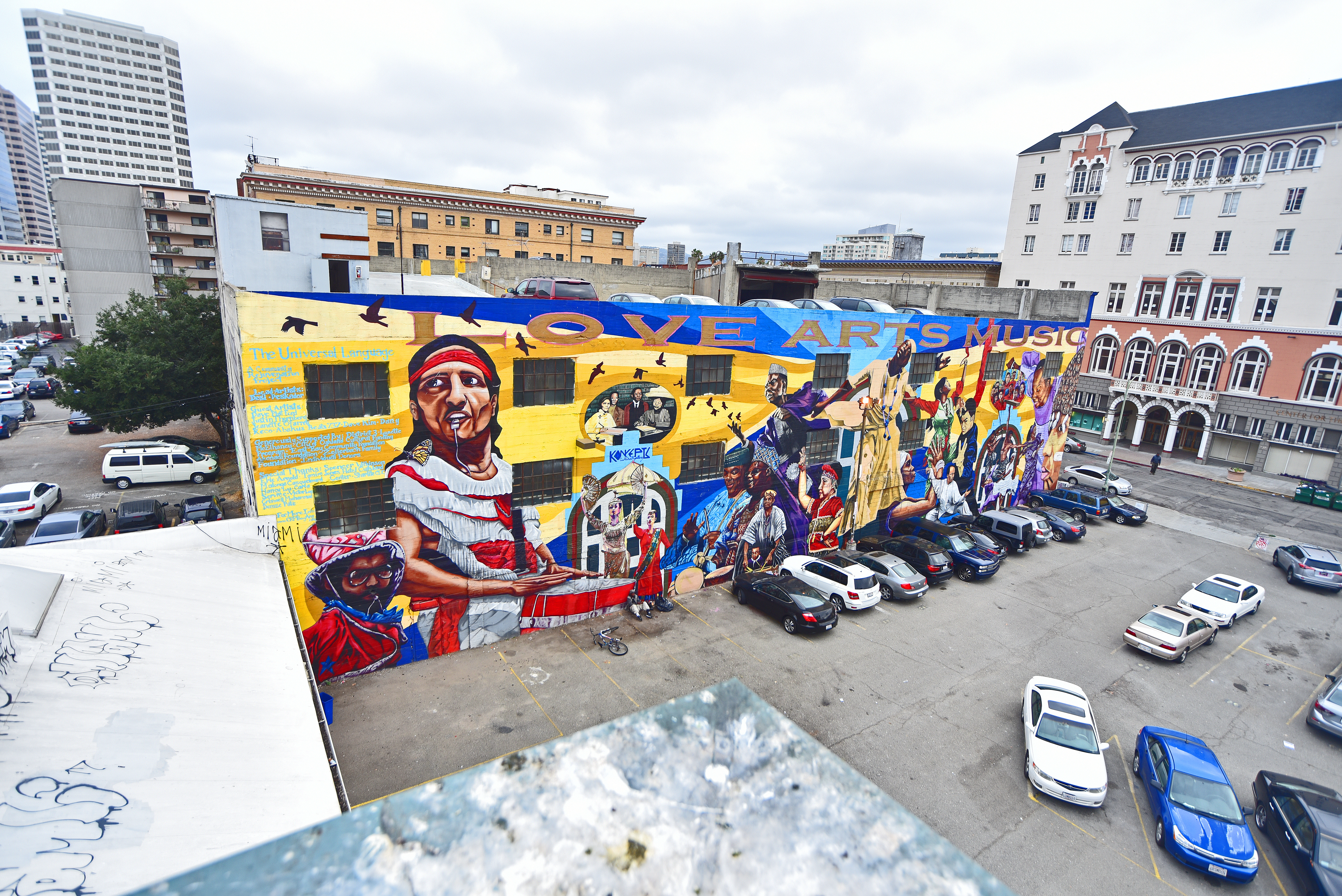
Origins and Beginnings
At the age of 12, CRP Founder and Executive Director Desi Mundo began writing his name in the Hyde Park neighborhood on Chicago’s South Side. He soon developed relationships with respected older writers ATTICA, RAVEN, and ZORE. They became his teachers, sharing an impassioned vision of inner-city youth transforming the walls of the city into beautiful masterpieces, by any means necessary.
Inspired by these teachers, the emergence of hip-ho,p and aerosol-driven subculture, and by the community murals of William Walker and other South Side muralists, Mundo’s style began to develop. In 1994, he produced his first major mural, a tribute to beloved former mayor Harold Washington, which was embraced by Chicago’s aerosol community. Mundo joined the Chi-Rock organization and continued to paint everywhere he could – walls, cafes, even viaducts. In 1999, he visited the Bay Area for the first time, painting a school mural in East Oakland. A few month later, he moved to Oakland. He began teaching spray paint classes at Calvin Simmons Middle School and managing a youth breakdance crew called Ground Effect, based out of Josie de la Cruz park in the Fruitvale neighborhood of East Oakland. They painted their recreation center with murals and held regular breaking practices, battles and community events. When the park closed for renovations, Mundo used a small grant from the city to begin throwing free all-ages events throughout Oakland called the Weekend Wake-Up. These organic hip-hop jam sessions and cultural celebrations became a community favorite, and were recognized by the East Bay Express in its annual “Best of the Bay” issue.
In the late 2000s, Mundo changed his artistic approach, switching from train yard pieces to street murals, targeting blighted, run-down areas in need of color and care. Mundo believed that incorporating community messaging, neighborhood beautification, and celebrations would make these works resonate with local residents, and create a sense of positive identification with the urban environment. Selecting the name Community Rejuvenation Project. Mundo formed a non-profit organization which combined the community mural tradition of Walker, the cultural messaging of Emory Douglas, and the integral values of hip-hop generation spraycan artists, including mentors RAVEN and PHASE2. Enlisting other like-minded artists, CRP became a collective, initially most active in East and West Oakland.
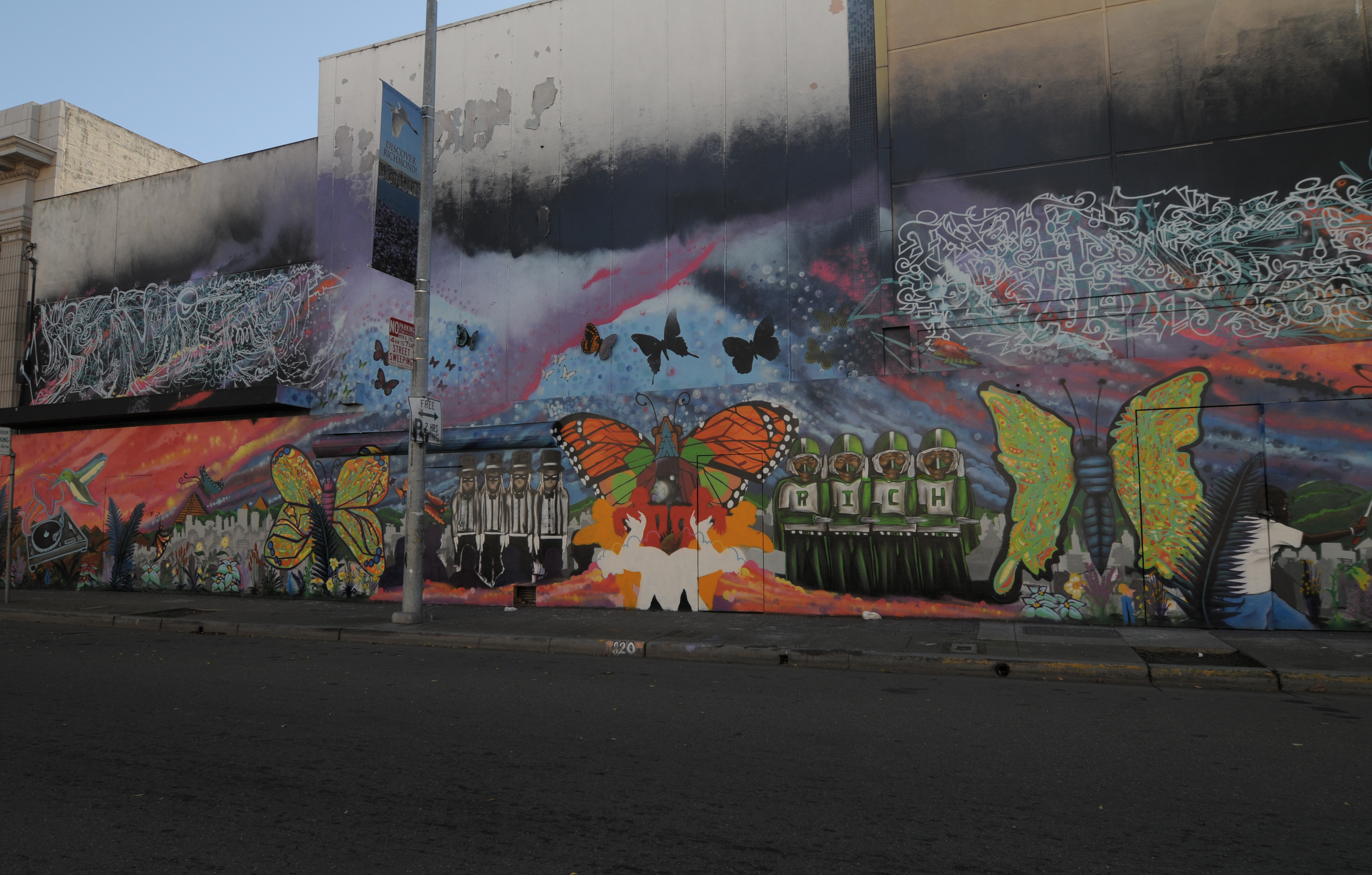
In 2008, Mundo was commissioned by the city of Richmond’s Arts and Culture Commission to create a mural on its centrally located MacDonald Ave. The design incorporated aspects of a previous mural on the site as well as the Richmond Robots, a legendary yet little-known regional dance derived from Oakland Boogaloo associated with urban youth culture in the 70s and 80s. This project was followed up with a massive youth employment project in the summer of 2009 with 30 young adults creating five murals, holding four block parties, cleaning over 100 blocks, and putting together magazine of their experiences.
Collective Model and Growth
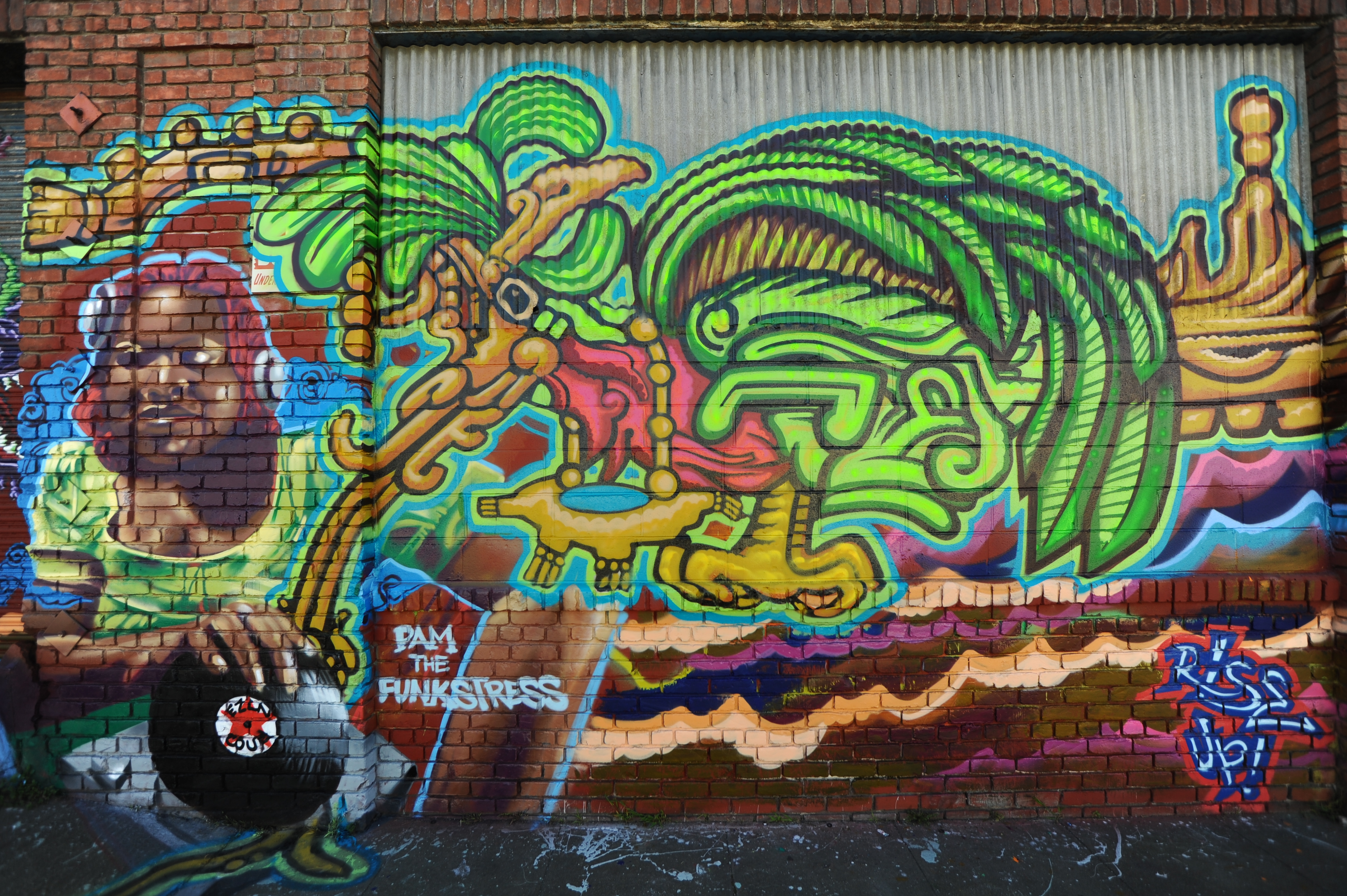
In 2010, CRP co-founded the United Roots community center with several other organizations. Adopting a collective model, the organization grew to 15 – 20 artists participating in projects throughout the Bay Area. The artists focused on specific streets and neighborhoods, creating grassroots art districts in several areas of Oakland. CRP’s output topped 30 murals for the year and the organization put out its first book, “Rejuvenation,” with stories and photos from the year. In 2011, CRP received its first city commission through Oakland’s Redevelopment Agency, a massive block-long mural in East Oakland titled “Peace and Dignity,” which sent a message of indigenous resilience and unity. Though the mural was respected by local residents and curbed a gang-tagging problem, Oakland’s abatement murals were defunded in 2012, when the state of California scuttled its Redevelopment Agency—which funded local Redevelopment Agencies. The loss of a prime source of arts funding came just as rising rents began to push the artist community out of Oakland, and gentrification became an actual thing, not just a buzzword. In spite of the setback, CRP continued its extraordinary output, producing 67 murals in 2012, including the large-scale People’s Grocery mural and a nine-block long pilot project on the Richmond Greenway.
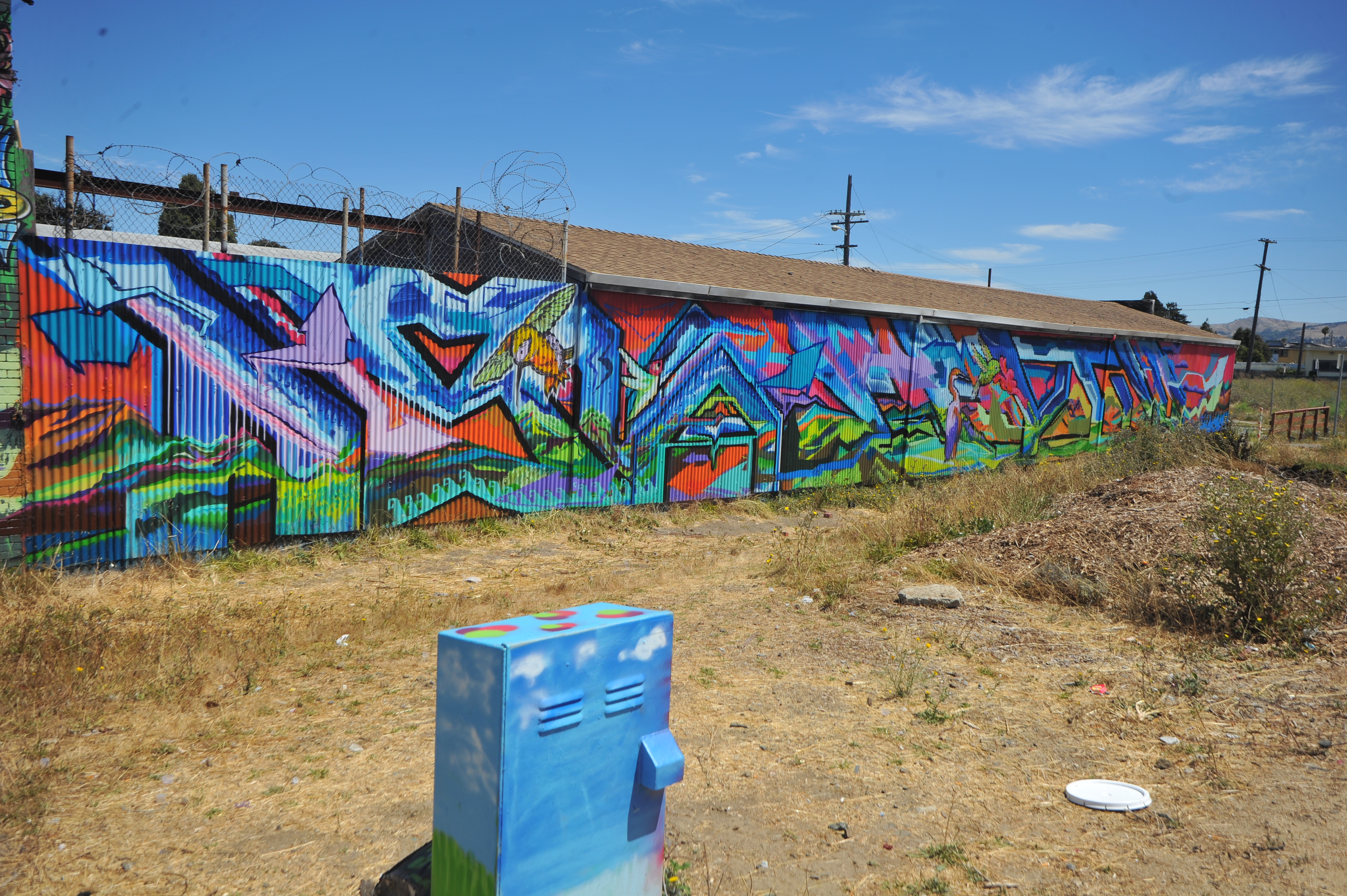
CRP also hired veteran photojournalist and cultural historian Eric Arnold as its Communications Director, which led to an expansion of CRP’s media platforms, increased outreach, a refinement of its organizational messaging, and a new focus on public art policy and abatement practices. As CRP developed its policy platform and cultivated its core audience through blog post report-backs and op/eds, Mundo was placed on Richmond’s misnamed “Anti-Graffiti Task Force,” convened after a city abatement worker painted out a legal mural created by high-school students. Mundo advocated for mural protections instead of a bureaucratic permission process and succeeded in stopping the practice of having murals removed simply for having an “aerosol aesthetic.”
In 2013, the Oakland City Council proposed a new “anti-graffiti ordinance” that sought to increase penalties against vandalism offenders while penalizing property owners for having graffiti on their buildings. CRP helped form the Oakland Creative Arts Coalition with groups such as Eastside Arts Alliance, Rock Paper Scissors, and Trust Your Struggle. The coalition successfully advocated for the inclusion of Restorative Justice provisions in the ordinance, and effectively argued that simply buffing over walls was cost-inefficient and offered no long-term results. As a result, the City Council allocated $400,000–$50,000 per Council district—for an “Anti-Graffiti Mural” program. This set-aside created the resources to commission vibrant murals all over town, and benefitted many individual artists and art organizations, including CRP.
Pavement to Policy Mural Arts Agency
2013 was also the year that CRP started its most ambitious work to date, the Alice Street Mural project. The project site consisted of four large walls bordering a parking lot at the corner of 14th and Alice Sts. – one of Oakland’s most-diverse neighborhoods, symbolized by the disparate Afro-Diasporic community around the Malonga Casquelourd Center for the Arts, and the senior Chinese community centered around the Hotel Oakland, and their shared history of discrimination, displacement, resistance, and resilience.
Over the course of three years, the organization conducted an intensive outreach and engagement process with these communities and neighborhood residents. The study included interviews with more than 50 culture keepers, in-depth research of historical archives, and numerous mural design presentations to the local community. Upon completion, the resulting mural, “the Universal Language,” instantly became one of Oakland’s most iconic examples of public art. A ribbon-cutting ceremony for Phase I of the mural was attended by Oakland’s mayor, representatives of both the Malonga Center and the Hotel Oakland, City staff, and Cephus Johnson of the Oscar Grant Foundation; a subsequent block party celebration held at the completion of Phase II, featured live dance performances by Diamano Coura, Fogo Na Roupa, the Hotel Oakland Dancers, and musical performances by Oaktown Jazz Ensemble and Kiazi Malonga. The mural was featured prominently in local media outlets and street art blogs, as well as in international travel magazines, the Visit Oakland website, the National Funders Conference, and promotional material for the Oakland Creative Neighborhoods Coalition (of which CRP was a founding organization) and the City of Oakland’s Cultural Affairs Program.
The Alice Street Mural Project expanded CRP’s multimedia capabilities considerably. Working with filmmaker and videographer Spencer Wilkinson, CRP produced two short trailers in advance of a feature-length documentary (to be released in 2018), which connects the saga of the Universal Language mural with Oakland’s rapid gentrification fight. The trailers were also instrumental in a successful crowdfunding campaign.; CRP also hosted several public events, including a panel discussion at Red Bay Coffee as part of the Matatu Festival of Stories.
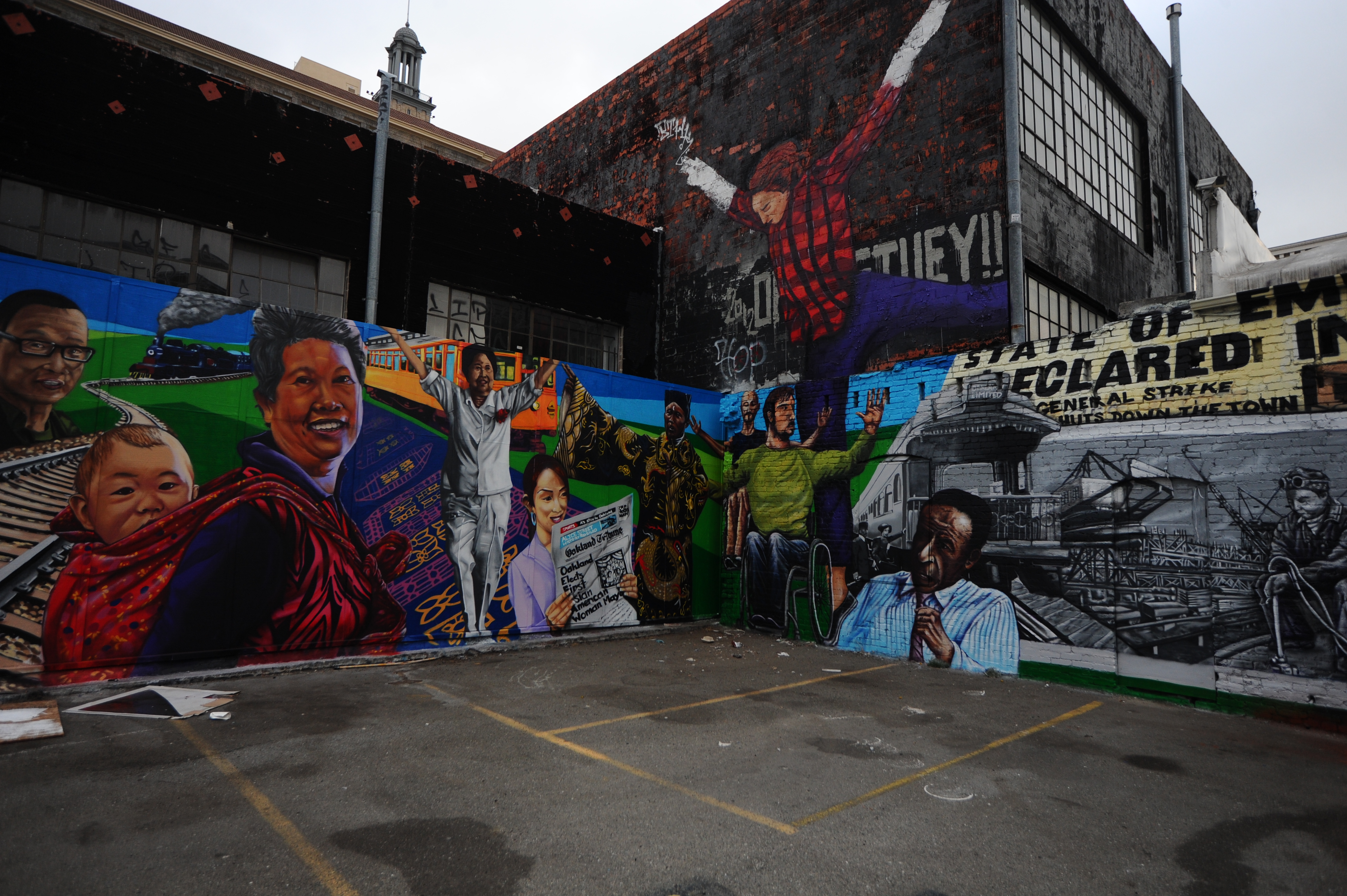
“The Universal Language” mural was at the center of the creation of the Community Coalition for Equitable Development, an organization of community and neighborhood stakeholders which has successfully negotiated several community benefit agreements with developers—resulting in much-needed wins for affordable housing, public art, and anti-displacement efforts. These actions were catalyzed by the announcement of a new development on the parking lot adjacent to the mural—which would obscure the mural. The announcement of the development resulted in community outrage, and a vibrant march to the Planning Department office to file and appeal (which eventually resulted in contributions to Malonga and a mural relocation fund). This experience also led to the Alice Street Symposia, a panel discussion on creative arts and policy-based solutions to the displacement and affordable housing crisis, which CRP hosted and moderated. The event, which ,featured representatives from the Black Arts Movement Business District, East Bay Asian Local Development Corporation, the Greenlining Institute, and the Dellums Institute for Social Justice, was produced in collaboration with the office of Assemblyman Rob Bonta.
Another highlight of 2017 was Mundo’s invitation to paint and present at the Block Museum’s 50th Anniversary Tribute to the Wall of Respect – the landmark mural painted by Walker and others which kicked off a national community mural movement. During the presentation, Mundo discussed the ineffectiveness and extravagance of the abatement industry, as well as the people-powered philosophy behind murals as an alternative abatement model.
As 2018 dawns, CRP has positioned itself as the most-prominent muralist organization in Oakland, and as a national leader in progressive public art policy and education. Over the last decade, as its organizational model has evolved, CRP has produced hundreds of murals, maintained its core grassroots sensibility and cultural aesthetic, while constantly elevating — building organizational capacity, expanding programmatic efforts, refining its engagement model, and developing new public art policy initiatives, and new multimedia projects. We are excited about existing projects and new collaborations with a broad client and collaborator base which includes guest artists, sister organizations, organizational partners, community stakeholders, non-profits, business owners and neighborhood business associations, community development corporations, developers, academic institutions, and government agencies.
